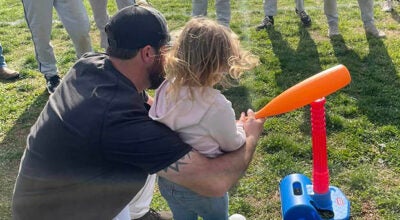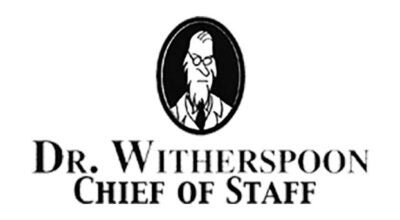The life of vocalist Marian Anderson
Published 6:46 pm Friday, September 4, 2020
|
Getting your Trinity Audio player ready...
|
When you have a passion for something and you have the support of family, friends and community, the possibilities are endless. Marian Anderson had that in abundance.
On February 27, 1897, Marian was born to John and Annie Anderson in Philadelphia, Pennsylvania. John was an ice and coal salesman at the Reading Terminal in Philadelphia later opening a small liquor business. Before her marriage, Annie attended the Virginia Seminary and College in Lynchburg, as well as worked as a teacher. Annie worked caring for small children to help support the family. Marian was the oldest of three girls. Her sisters Alyse and Ethel were also singers. In fact, Ethel’s son James became a noted conductor. The Andersons were devout Christians and very active in the Union Baptist Church in South Philadelphia. Moreover, Marian’s Aunt Mary convinced her niece to join the junior choir at age 6 where she sang solos and duets often with Mary.
Anderson’s love of singing was fostered as Mary took her to concerts and other musical events throughout Philadelphia. Anderson was even paid 25 or 50 cents for singing at local events. At age 10 Marian joined the People’s Chorus of Philadelphia performing solos and when she reached her teens she made as much as $4 or $5 for singing.
Tragedy struck the Anderson family when in January 1910 Marian’s father died. The family moved in with her grandparents Benjamin and Isabelle Anderson, but a year later Benjamin passed away. Anderson attended Stanton Grammar School, however, her family could but afford to send her to high school but she continued performing and singing in her church’s adult choir. Subsequently, numerous people from the Black community including her chorus director and pastor raised the money for her singing lessons with Mary Saunders Patterson and attendance at South Philadelphia High School where she graduated in 1921. After being denied entrance into the Philadelphia Music Academy, she eventually met Giuseppe Borghetti who arranged a recital where Anderson performed English, Russian, Italian and German music at the Town Hall in New York City in April 1924.
Anderson was a powerhouse singer who performed classical and spiritual music. Anderson got her big break winning a singing competition sponsored by the New York Philharmonic, and performed in concert with them on August 26, 1925. She also performed at Carnegie Hall and other places across the United States, but racism prevented her career from taking off in the states initially.
Fortunately, her European experience got a jump start when in 1929 two Rosenwald Fund representatives encouraged her to apply for a Rosenwald Fellowship receiving $1,500 to study in Berlin. Between 1925 and 1965 Anderson travelled throughout the U.S. and Europe performing concerts and recitals. In 1933 her debut concert was at Wigmore Hall in London, England and was an enthusiastic success never encountering the racism she had in the U. S. The virtuoso travelled to Scandinavia, Helsinki, Finland among other places. Anderson was offered acting roles in opera companies but because of her lack of acting skills declined, however, she did perform arias in her performances. During those years Anderson recorded many works showcasing her wide range of musical prowess. When she returned to the U. S. great fanfare awaited Anderson. Unfortunately, prejudice still reared its ugly head and while performing about 70 recitals here, Anderson was still denied room and meals at hotels and restaurants so much so that Albert Einstein hosted the singer on many occasions at his home.
Anderson’s trailblazing ways only intensified when in 1939 she was denied permission to perform at the Daughters of the American Revolution’s Constitution Hall in Washington, D. C. because of the city’s segregated whites-only policy. Amongst a barrage of protests from individuals, including the NAACP, the D. C. Board of Education was picketed since it denied her the availability to perform in the local high school auditorium. Eleanor Roosevelt, a noted member of the DAR, along with a thousand of other members resigned from the organization. Even southern newspapers like the Richmond Times-Dispatch supported Anderson.
Afterwards, First Lady Eleanor Roosevelt convinced her husband President Franklin Roosevelt to persuade Secretary of the Interior Harold L. Ickes to arrange an open air concert on the steps of the Lincoln Memorial which took place on Easter Sunday April 9, 1939 with a performance of “My Country Tis of Thee” which drew a crowd of 75,000 of all races and a national radio audience of millions. In June of that same year Anderson received the NAACP Spigarn Medal for distinguished achievement, which was presented by First Lady Roosevelt. This was in conjunction with the 30th NAACP conference in Richmond. On July 17, 1943, Anderson married Orpheus H. Fisher, an architect who proposed to her as a teenager at the Elmwood Chapel in Bethel, Connecticut. She became stepmom to James Fisher and they bought a 100-acre farm in Danbury, Connecticut.
Not surprising Anderson entertained troops in hospitals and military bases during World War II and the Korean War. In addition, she continued to achieve many honors and accolades. On January 7, 1955, Anderson was the first African American to perform with the Metropolitan Opera in New York City performing in Giuseppe Verdi’s Un Ballo in Maschera. She sang at the inaugurations of Presidents Dwight D. Eisenhower and John F. Kennedy in 1957 and 1961, respectively. Furthermore, Anderson toured India and the Far East as a good will ambassador. She was a delegate to the United Nations, served on the board of the Danbury Music Center, received the Congressional Gold Medal in 1977 and the Kennedy Center Honor in 1978 to name a few. Anderson established the Marian Anderson Award in 1943 to give support to singers and any artist seeking a performing career who demonstrated leadership as a humanitarian.
Sadly, on April 8, 1993 Anderson died of congestive heart failure at age 96 in Portland, Oregon and is buried in Eden Cemetery in Collingsdale, Pennsylvania. The Marian Anderson House in Philadelphia was added to the National Register of Historic Places in 2011. There are plans to redesign the $5 bill to commemorate the 100th anniversary of the 19th Amendment which granted women the right to vote and on it will be Anderson alongside Eleanor Roosevelt.
Marian Anderson Fisher truly was an inspiration to all people. The virtuoso powerhouse performer had a passion that drove her to develop her craft and combat racism and with the support of her family and community she moved mountains with her amazing voice to bring joy and social change.
Judy Moore a tour guide at The Central High Museum lives in Wylliesburg and can be reached at ju.mo39@live.com.




